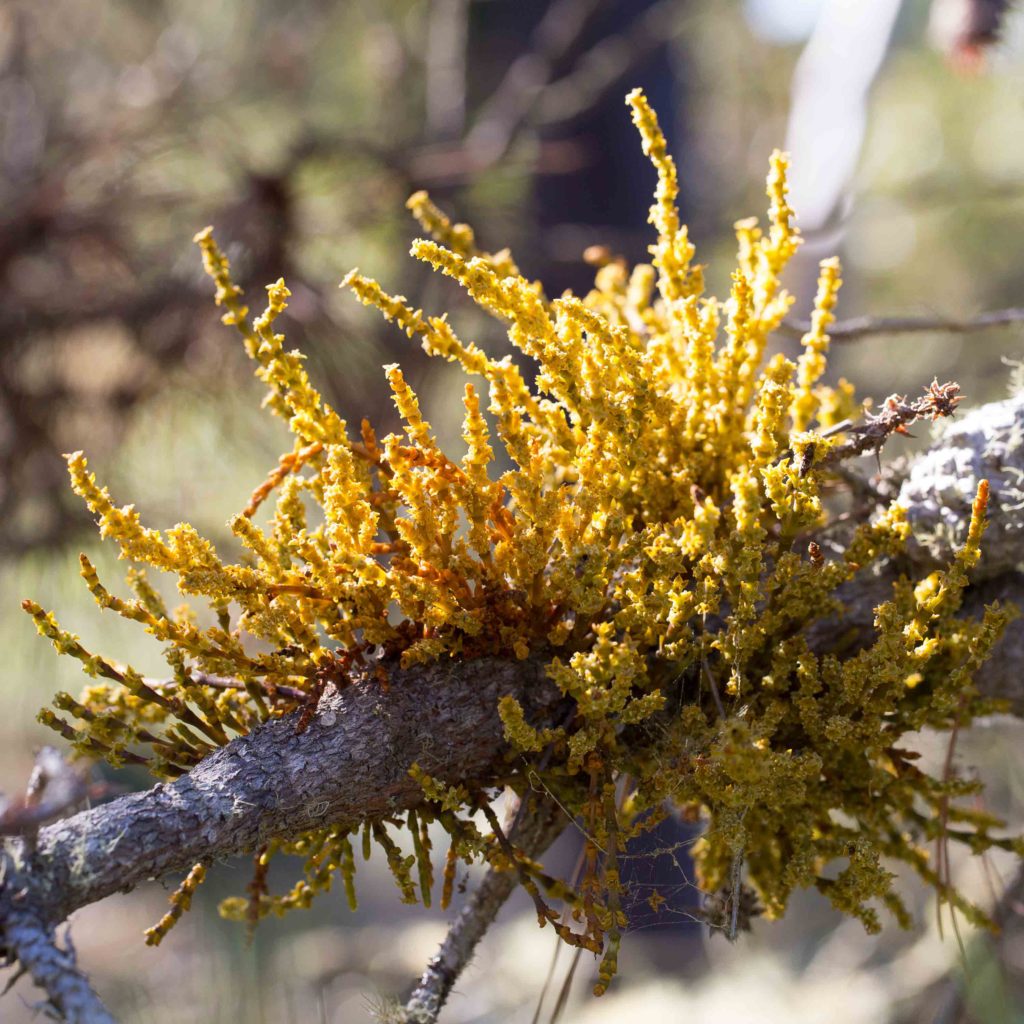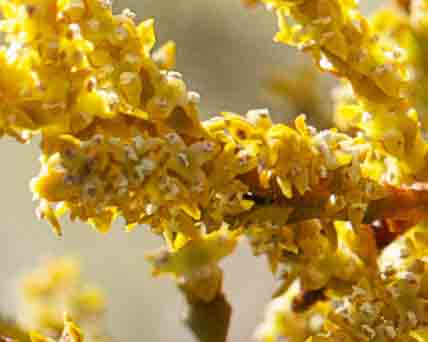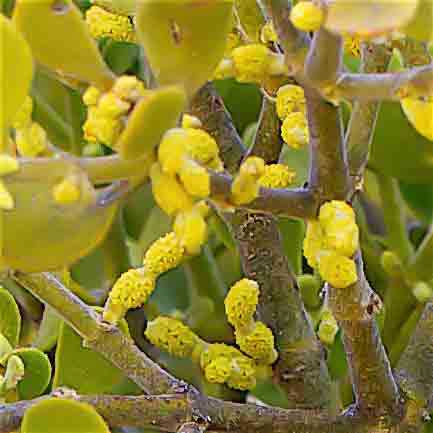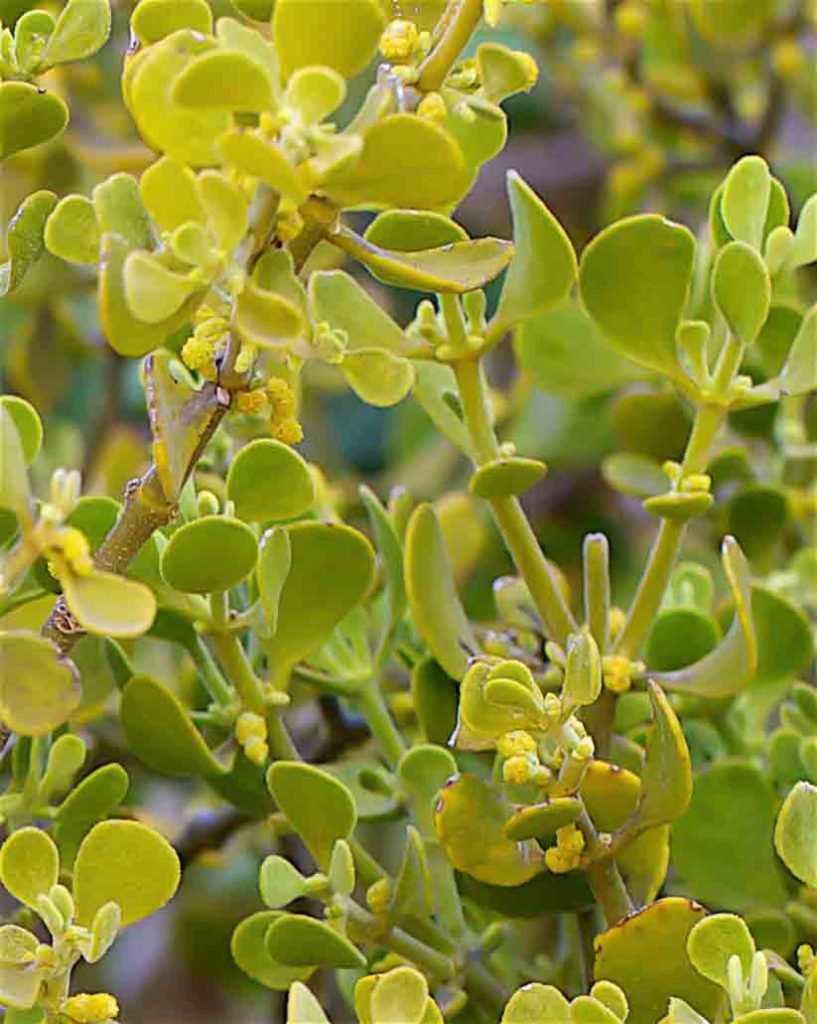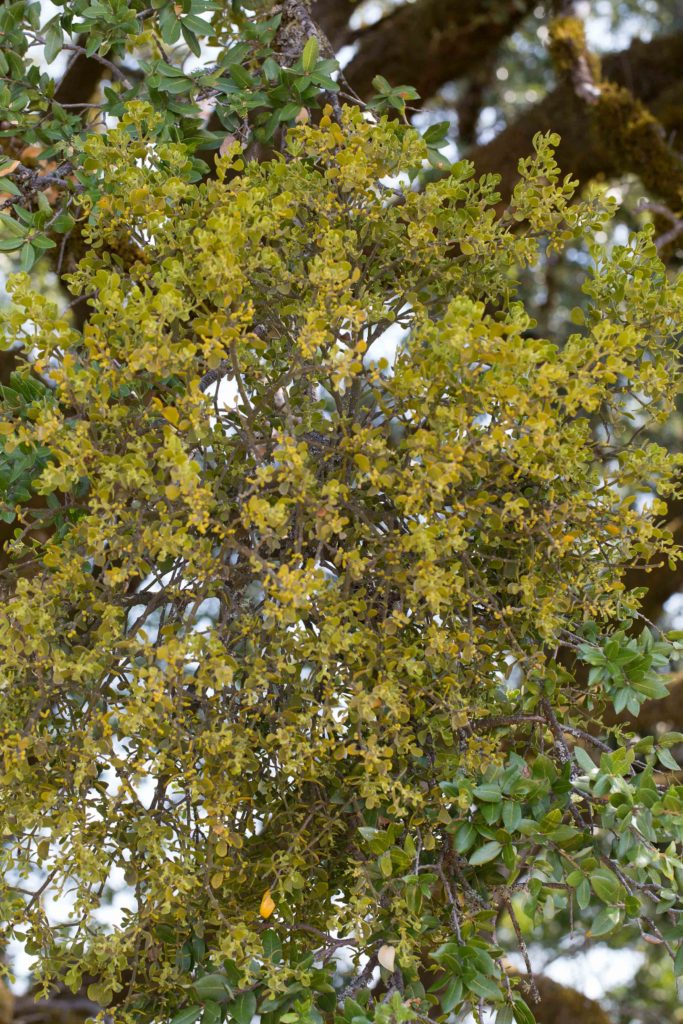Viscaceae: Mistletoe Family
Pine / Dwarf Mistletoe – Arceuthobium littorum
Blooms:
July–Nov
Plant Height:
Stems 10–20 cm
Flower Size:
Very small
Origin:
Native
Habitat:
Coastal, parasitic on pines
Notes:
This mistletoe is found only on pines. Unlike Pacific / Oak Mistletoe (Phoradendron leucarpum, see below), it is wholly parasitic, using specially modified roots called haustoria to draw water and nutrients from its host plant. Although Jepson combines this species with two others under Arceuthobium campylodum, more recent literature suggests that differences in form and host plants justify keeping the three species separate. This species is found only near the coast, on Monterey and Bishop Pines (Pinus radiata & muricata).
Pacific / Oak Mistletoe – Phoradendron leucarpum subsp. tomentosum
Blooms:
July–Sept
Plant Height:
Stems < 80 cm
Flower Size:
Very small
Origin:
Native
Habitat:
Parasitic on oaks and other plants
Notes:
Unlike Pine Mistletoe (Arceuthobium littorum, see above), this is only partially parasitic. While it obtains some water and nutrients from its host plant, it can also photosynthesize with its greenish leaves. Leaves are elliptic to roundish, 15–30 mm long. Its flowers are in short, cylindrical yellow spikes. Despite its common name, this is found on a variety of plants as well as oaks, including California Bay Laurel (Umbellularia californica), Chamise (Adenostoma fasciculatum) and manzanitas (Arctostaphylos sp.).
